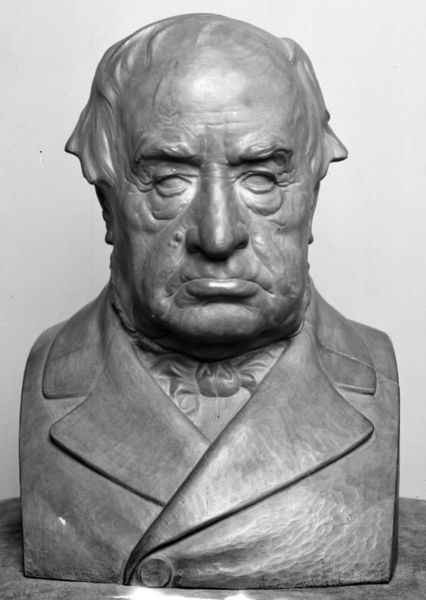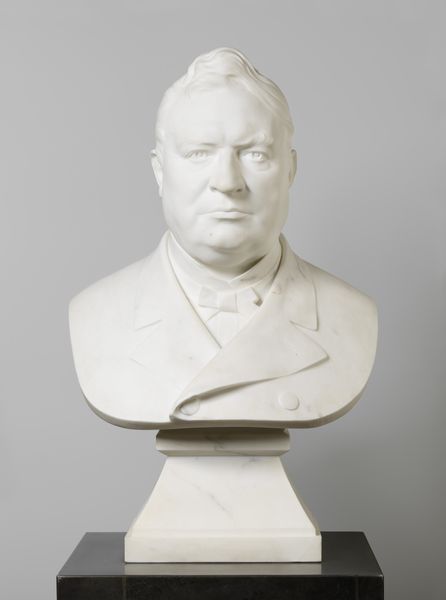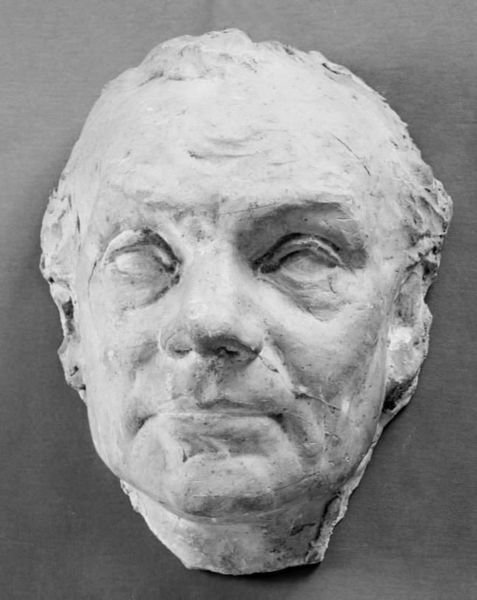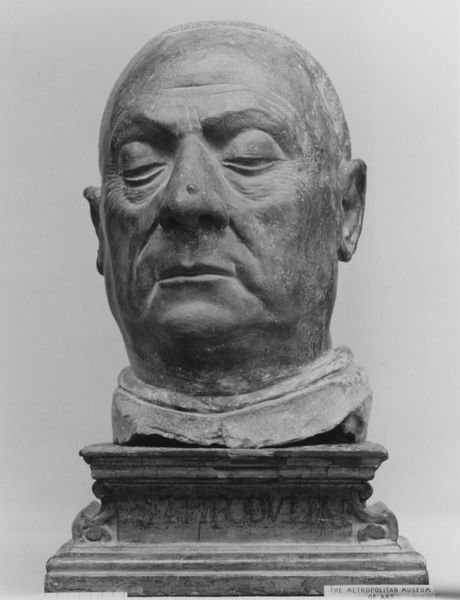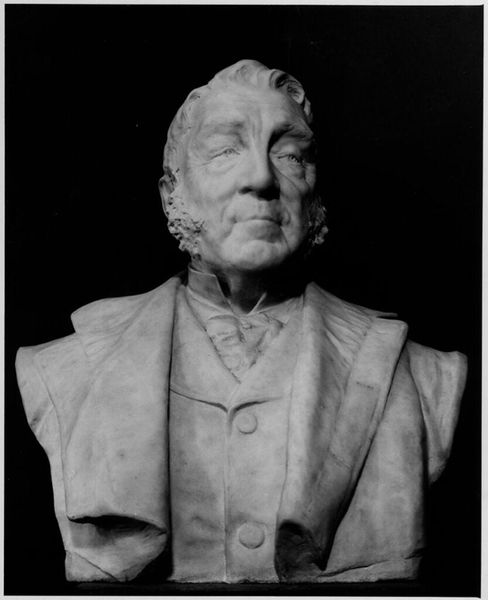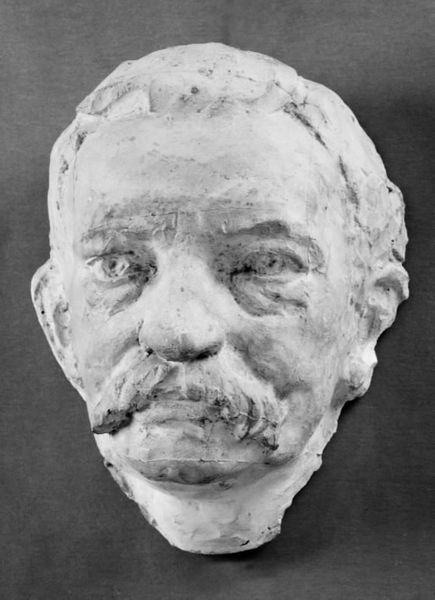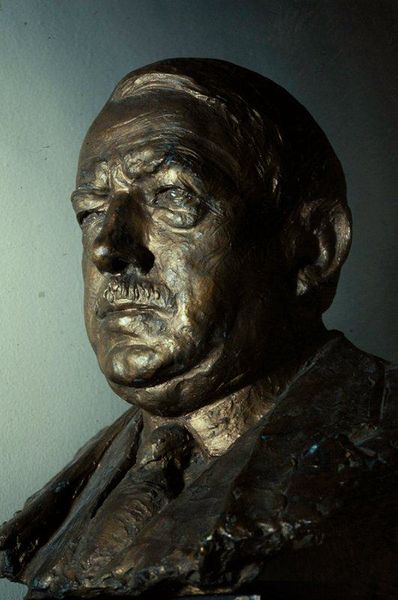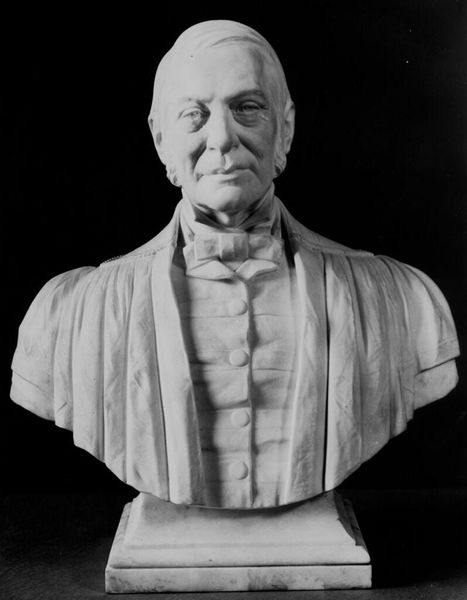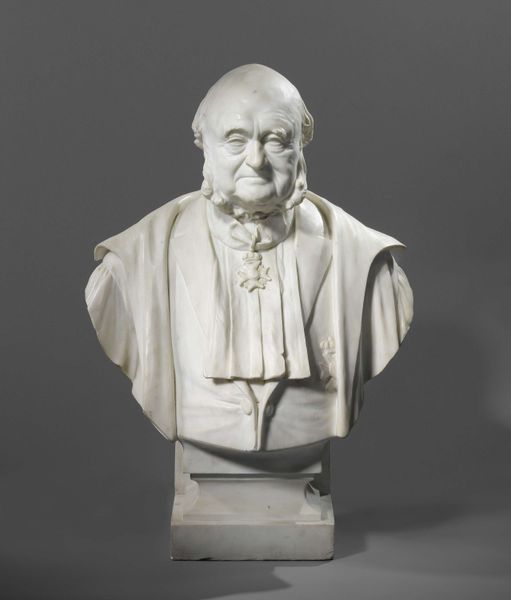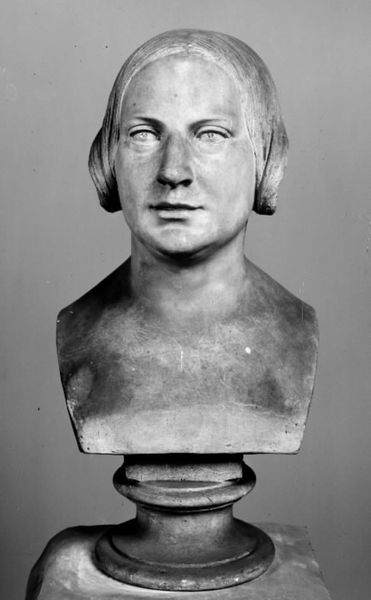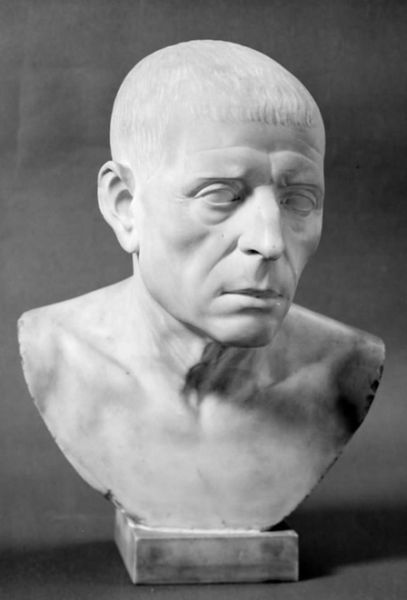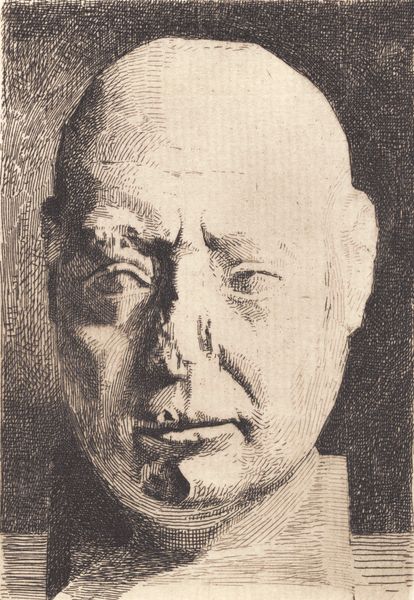
sculpture, marble
#
portrait
#
portrait image
#
sculpture
#
classical-realism
#
frontview face
#
sculptural image
#
portrait reference
#
unrealistic statue
#
portrait head and shoulder
#
framed image
#
sculpture
#
black and white
#
marble
#
statue
Dimensions: 52 cm (height) x 53 cm (width) x 32 cm (depth) (Netto)
Editor: This is "The Librarian Carl S. Petersen," a marble sculpture by Max Meden, created in 1921. The stark black and white image gives the sculpture an austere, almost intimidating feel. What can you tell me about its historical context? Curator: Looking at it through a historical lens, we see this work situated within a larger debate about the purpose of public art. This sculpture commemorates Carl S. Petersen, a librarian, and was likely intended to convey a sense of authority and intellectual gravitas. How do you think the choice of marble contributes to that intention? Editor: Marble suggests timelessness and importance, definitely aligning with the desire to create a lasting impression. Did the public reception reflect these goals at the time? Curator: That's an important question! Public reception to monuments like this was often tied to broader socio-political currents. Who Petersen *was*, and what values he represented, would have been crucial. Think about how library science was evolving in the early 20th century and the increasing importance of public institutions. It is reasonable to suspect that people at the time would want to commemorate this librarian and bring to the community a figure they can look up to, and also that classical forms legitimized these contemporary figures and institutions. How might this tie into patronage, then? Editor: It makes sense that funding could have played a huge role. Depending on whether the sculpture was commissioned by the library itself or a private patron, the artistic expression and public image would likely vary to satisfy the source. So, we’re not just looking at the sculpture itself, but the entire system that brought it into being. Curator: Exactly. And by understanding the cultural and political landscape surrounding its creation, we gain a much deeper appreciation for its significance, one that goes beyond simply admiring the artistry of it. Editor: This conversation shifted my understanding from seeing the artwork to analyzing all factors related to its existence! Thank you. Curator: Indeed, and by engaging in critical inquiry, we enhance our own public function as observers of culture and history!
Comments
No comments
Be the first to comment and join the conversation on the ultimate creative platform.
